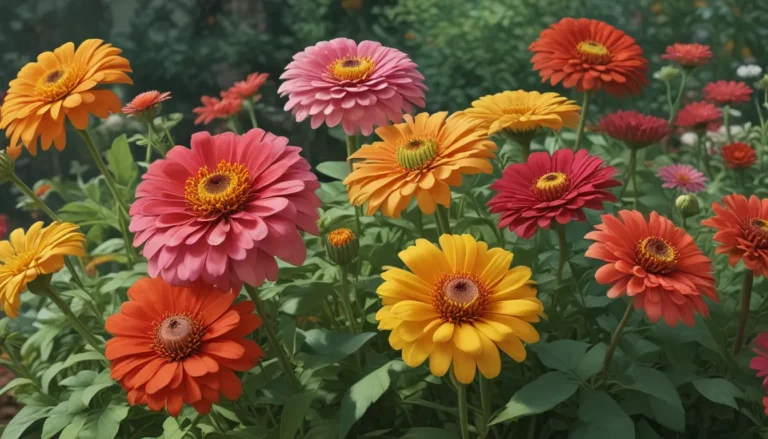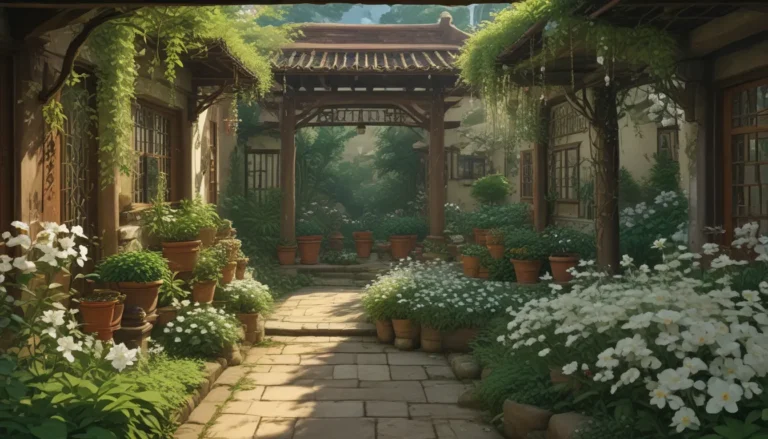Everything You Need to Know About Growing Fall-Blooming Japanese Anemone Flowers

Have you ever seen those tall and elegant Japanese anemones in a garden, blooming in the late season with their broad, saucer-like flowers in a variety of beautiful colors? If you’ve ever wondered how to grow and care for these stunning plants, you’ve come to the right place!
From midsummer until October or even November, Japanese anemones grace the garden with their creamy to pure white, purple, and various shades of pink flowers. These plants are easy to grow and adaptable to different conditions, making them ideal for light shade gardens, woodlands, or mixed in with shrubs like azaleas and rhododendrons.
In this comprehensive guide, we’ll cover everything you need to know about Japanese anemones, from propagation to pruning and maintenance, to the best cultivars to select. By the end of this article, you’ll be well-equipped to cultivate your own stunning display of fall-blooming Japanese anemone flowers.
What Are Japanese Anemones?
Japanese anemones are part of the Ranunculaceae (buttercup) family, with the species Anemone hupehensis being the most commonly grown in home gardens. They are native to subalpine grasslands and meadows in China, with many popular cultivars originating from Japan.
These plants feature two- to three-inch blooms that come in shades of pink, purple, and white. The flowers sit atop long, sturdy stems and can resemble poppies, clematis, or shaggy dahlias, depending on the variety. Japanese anemones typically start flowering in mid to late July and continue into October or November, providing a long-lasting display in the garden.
While these plants are relatively low-maintenance, it’s important to note that Japanese anemones are toxic when ingested, so caution should be exercised when planting them around children and pets.
Propagation
The best way to propagate Japanese anemones is through division and root cuttings taken in early spring or early fall. Starting them from seed is possible but slower, and hybrids won’t grow true to the parent plant.
To divide existing clumps, carefully dig up the entire root system with a garden fork, then separate the roots into smaller clumps with their own rhizomes and viable stems. You can also plant the trimmed root pieces to produce new plants.
Root cuttings can be laid horizontally in moist, gritty starter soil and covered with a clear plastic lid to retain moisture. Once new growth emerges, transplant the cuttings into larger pots or into the garden.
How to Grow Japanese Anemones
Japanese anemones prefer part to full sun locations with moist, well-draining soil enriched with organic matter. They require consistently moist soil but don’t tolerate waterlogged conditions, particularly in the winter.
When planting Japanese anemones, dig ample holes, add compost, bone meal, and well-draining materials to the soil, then gently place the plants in the holes and backfill with soil. Maintain even moisture in the soil and provide light fertilization in early spring.
These plants rarely require staking but appreciate protection from strong winds, especially the tall, large-flowered cultivars. If planting in containers, ensure adequate drainage and monitor watering more closely than in garden soil.
Growing Tips
- Grow Japanese anemones in part to full sun locations.
- Plant them in organically rich, well-draining soil.
- Maintain even moisture in the soil without waterlogging.
Pruning and Maintenance
Japanese anemones are low-maintenance plants that require minimal upkeep once established. Deadheading isn’t necessary but can be done for tidiness, although it removes the attractive seed heads that add winter interest.
In spring, clean plants by removing old stalks and leaves, and cut them back to a few inches above soil level. Mulch plants for winter protection and provide division every few years if needed.
Cultivars to Select
Several exciting cultivars of Japanese anemones are available, including:
Cinderella
- Princess-pink flowers with frilly yellow stamen.
- Ideal for cutting and cottage gardens.
- Thrives in Zones 5-8.
Honorine Jobert
- Stunning white flowers.
- Adds a stately presence to gardens.
- Hardy in Zones 4-8.
September Charm
- Shimmering silvery pink flowers with a frothy golden center.
- Recipient of the RHS Award of Garden Merit.
- Thrives in Zones 4-8.
These cultivars offer a range of colors and characteristics to suit different garden styles and preferences.
Managing Pests and Disease
Japanese anemones are relatively pest and disease-resistant, with deer and rabbits avoiding them due to their toxicity. Control slugs, snails, blister beetles, caterpillars, and Japanese beetles by handpicking and applying barriers or diatomaceous earth.
To prevent root rot, avoid waterlogged conditions, especially in winter.
Best Uses for Japanese Anemone Flowers
Japanese anemones are versatile plants that can be used in various settings, including:
- Mixed in with shrubs like azaleas and rhododendrons.
- Planted in containers or perennial beds.
- Paired with other shade-tolerant specimens like astilbe and hosta.
They also make long-lasting cut flowers, retaining their color and beauty well into the autumn months.
With their lanky profile, large flowers, and long bloom times, Japanese anemones add a touch of splendor to the fall garden. Low maintenance and versatile, they thrive in part shade to full sun locations with moist, well-draining soil, making them an excellent addition to any garden.
Remember to plant plenty – these stunning flowers are not only beautiful in the garden but also make lovely additions to fall flower arrangements!
Have you grown Japanese anemones in your garden? Share your experience in the comments below!
For more information on growing flowers, check out these guides:
- How to Grow and Care for Candle Anemones
- How to Grow and Care for Thimbleweed
- How to Grow and Care for Dreamy Delphiniums
By following these tips and guidelines, you can successfully grow and enjoy the beauty of fall-blooming Japanese anemone flowers in your garden. Whether you’re a beginner or experienced gardener, these plants offer a stunning display and are a valuable addition to any landscape. Enjoy the splendor of these elegant blooms as they light up your garden in the late season with their vibrant colors and graceful presence.





